Britain's Powderham Castle is Older Than Highclere and Twice as Notorious
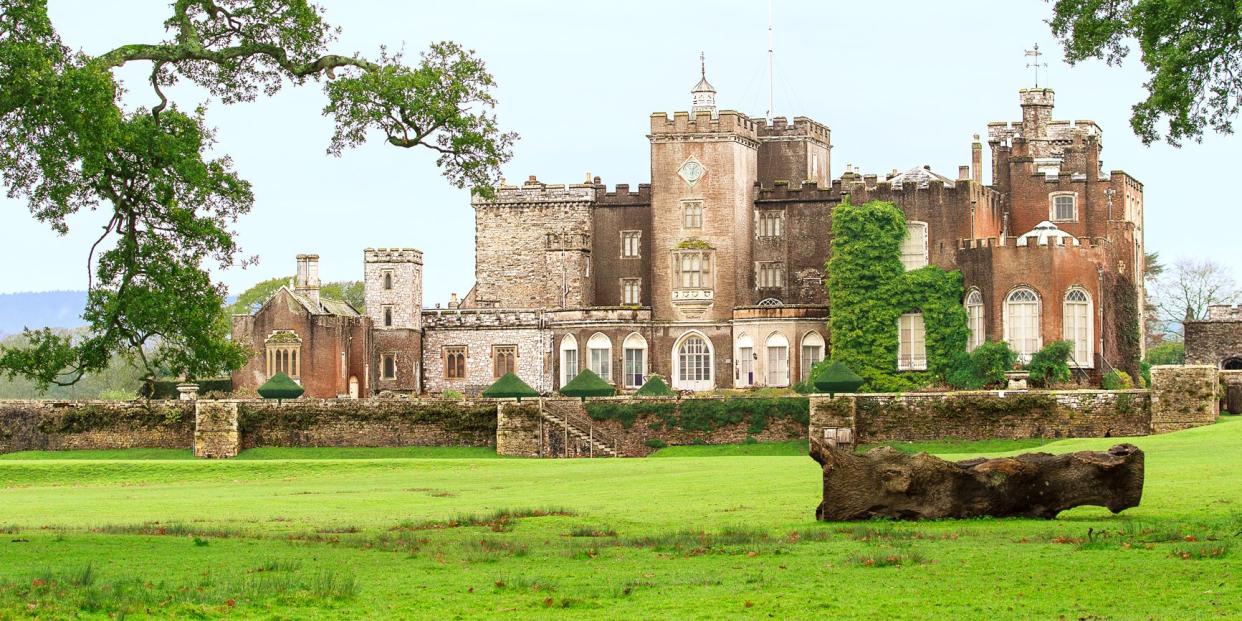
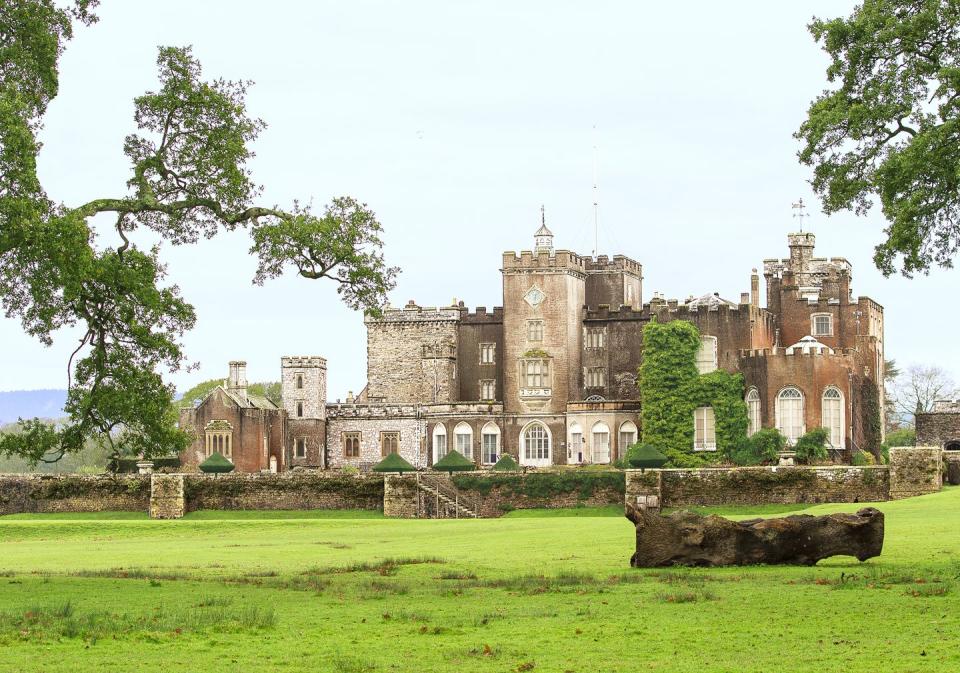
Fifteen miles downstream from the cathedral city of Exeter, in southwest England, an ancient home looks over the estuary of the River Exe, like a grand dowager unimpressed by the passing of time. Deer graze in the park, the family flag rises every morning, and Powderham Castle stands tall, its frosty appearance a monument to six centuries of hardship and resolve.
Its story begins during a dark period in Europe not unlike the past year. A disease originating in Asia traveled along the Silk Road, took hold in Italy, and eventually made landfall in Britain. Powderham rose from the ashes of the Great Plague, but that wouldn’t be its last brush with adversity.
“The long history provides a helpful perspective. However terrible things may appear at the moment, they will eventually pass into the background,” says Charlie Courtenay, a lawyer and the 19th earl of Devon, who lives in the castle with his American wife, Allison Joy “A.J.” Langer, an actress, and their two children. They are the 28th generation of Powderham caretakers.
“Powderham,” he says, “is a symbol of endurance.”
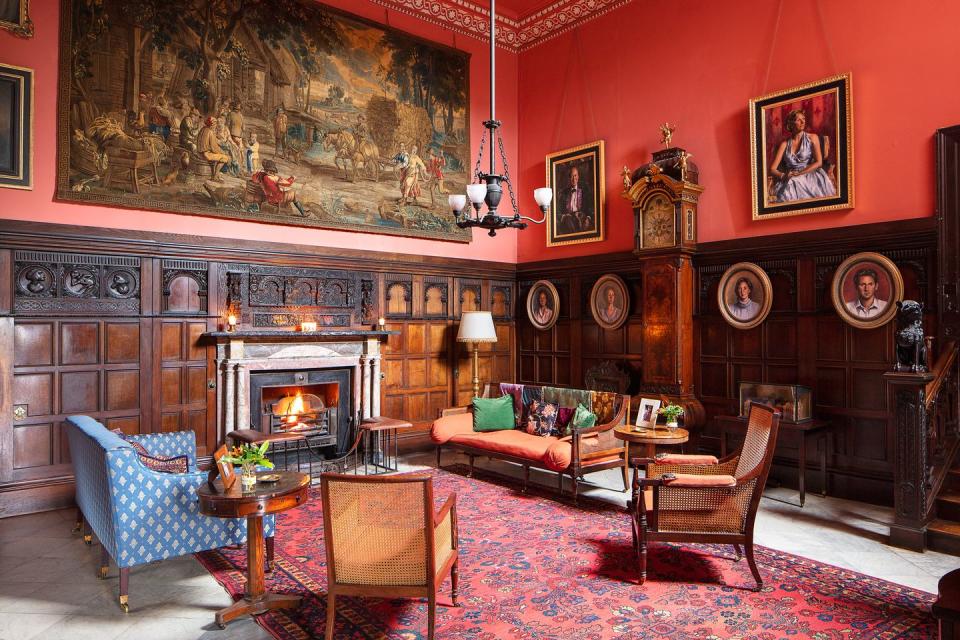
A peer in the House of Lords, Courtenay, 44, is a student of the past, as you might expect of someone with a forebear who fought with Henry V at the siege of Harfleur. Though he inherited the home only five years ago, he grew up here, and he appreciates the winding road that led to his custodianship—the heartbreaks, scandals, and struggles that make up the ancestral lore.
Royals, Rebels & Reprobates
From the turn of the 14th century, when the castle that anchors the grounds was built, up to the present day, when the estate comprises just 3,500 acres, a fraction of its former 50,000-acre glory, Powderham’s ups and downs are the saga of a dynasty’s proud effort to preserve its legacy no matter the odds.
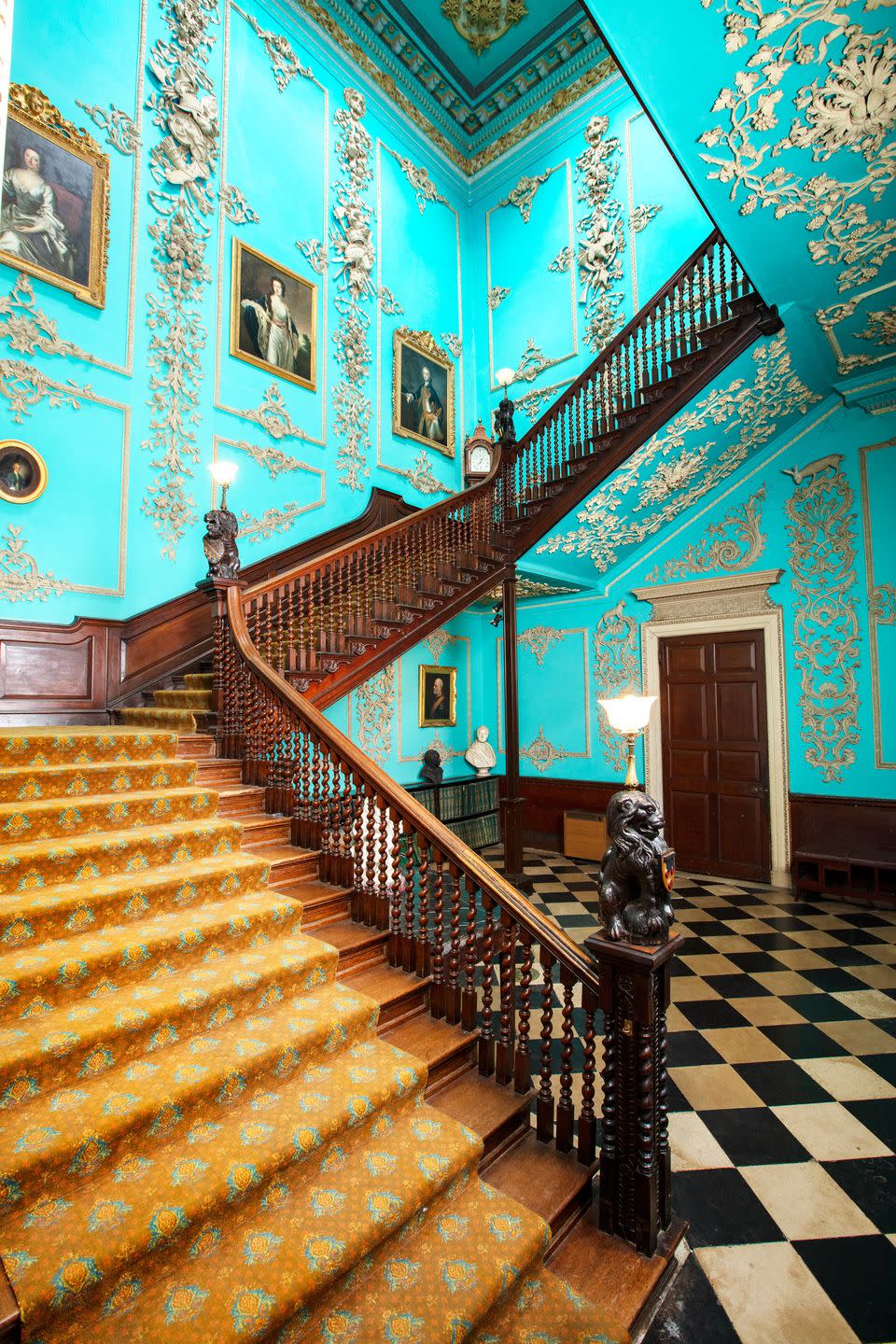
It’s not lost on Courtenay that Powderham’s most glorious period, a heyday in the 18th century punctuated by innovative architecture and breathtaking garden design, was preceded by wars that led to the ostracism of the formerly powerful landowning earls of Devon.
“When the noble families of England fell out during the Wars of the Roses, the castle was besieged,” Courtenay says. “During the Civil War, Powderham stood out for King Charles I, putting it on the losing side. And afterward it was abandoned.”
Then, in 1710, a rebirth: Sir William Courtenay and his wife returned and remodeled the castle. In the 1750s a team of superb but otherwise unknown craftsmen created one of the great Rococo interiors in Britain, including a staircase hall with ornate fixtures suspended from bows of waving ribbon, all in high-relief plaster.

Sir William’s great-grandson and only male heir, the 3rd viscount of Powderham, was a pioneer, unapologetically gay even though sexual acts between men were a crime then. Famously beautiful as a boy, “Kitty,” as he was known to intimates, was painted the year he turned 21 in masquerade dress, with a gold cloak and enrichments over a van Dyke suit of black velvet.
He relished the splendor of his fabulous trappings, commissioned a music room designed by the Gothic Revival great James Wyatt, and was eventually run out of the country in 1810 when his affair with the writer and art collector William Beckford was publicized by a spiteful relative. His cousin and heir, the 10th earl of Devon, had the money to add battlements and a courtyard in the 1840s, making the castle even more castlelike, but he closed the estate’s chapter of great architecture and, indeed, high living.
The Next Downton?
Catastrophe struck with a series of deaths: The 14th, 15th, and 16th earls, all brothers, died in quick succession in the 1920s and ’30s. Courtenay’s grandfather, the 17th earl, was the son of the last brother, and in 1939 he rattled society by marrying a divorcée on the eve of World War II. Venetia, the countess of Cottenham, was a lady of spirit; she gave birth to her fourth child, Courtenay’s father, on the State bed, as Exeter was being bombed.

After the war the outlook for Britain’s country houses was bleak. The nation was exhausted, taxes were high, and the cost of heating oil had gone through the preindustrial roof. The Courtenays, like their predecessors, adapted again, opening the estate to paying visitors who craved the elegance of a bygone era, a fascination that continues to this day thanks to series like Downton Abbey, which has led many to visit properties like Highclere Castle.
By the time Charlie Courtenay inherited his birthright, the roof still hadn’t been fixed, but at least Powderham was in a “much better state than it had been.” The ancestral seat of one family became the starting point of others: the woodland garden and Old Riding School are available for weddings and celebrations. The estate also lets cottages, commercial property, and farmland.
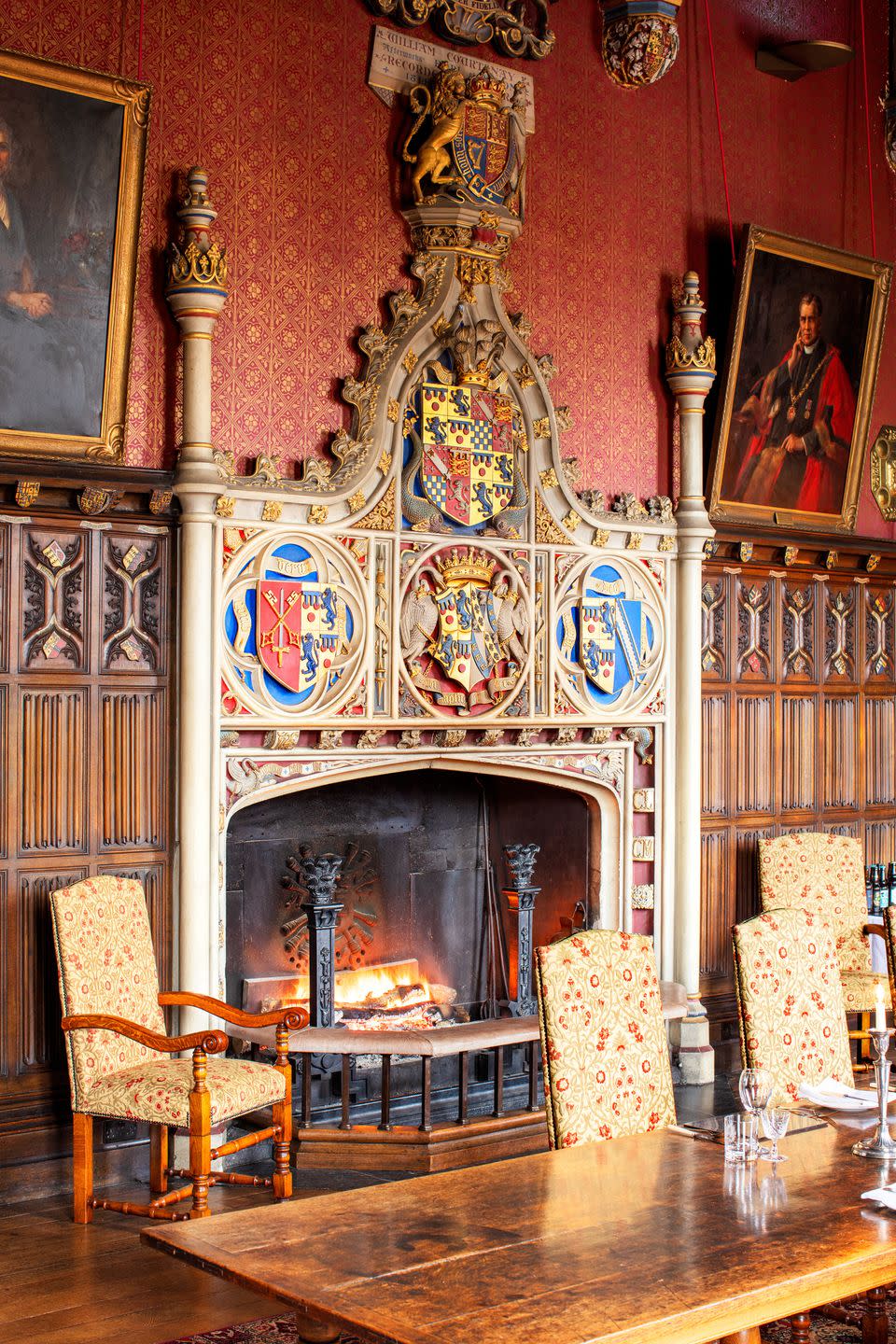
“Powderham has always been a business,” Courtenay says. “A coat of arms is not very different from a brand logo.”
There is a difference, though, between the landed gentry of today and that of yesteryear. The modern Courtenays do not draw financially from Powderham. Their bottom line is the survival of a precious heirloom, and the eventual handoff to its future guardians.
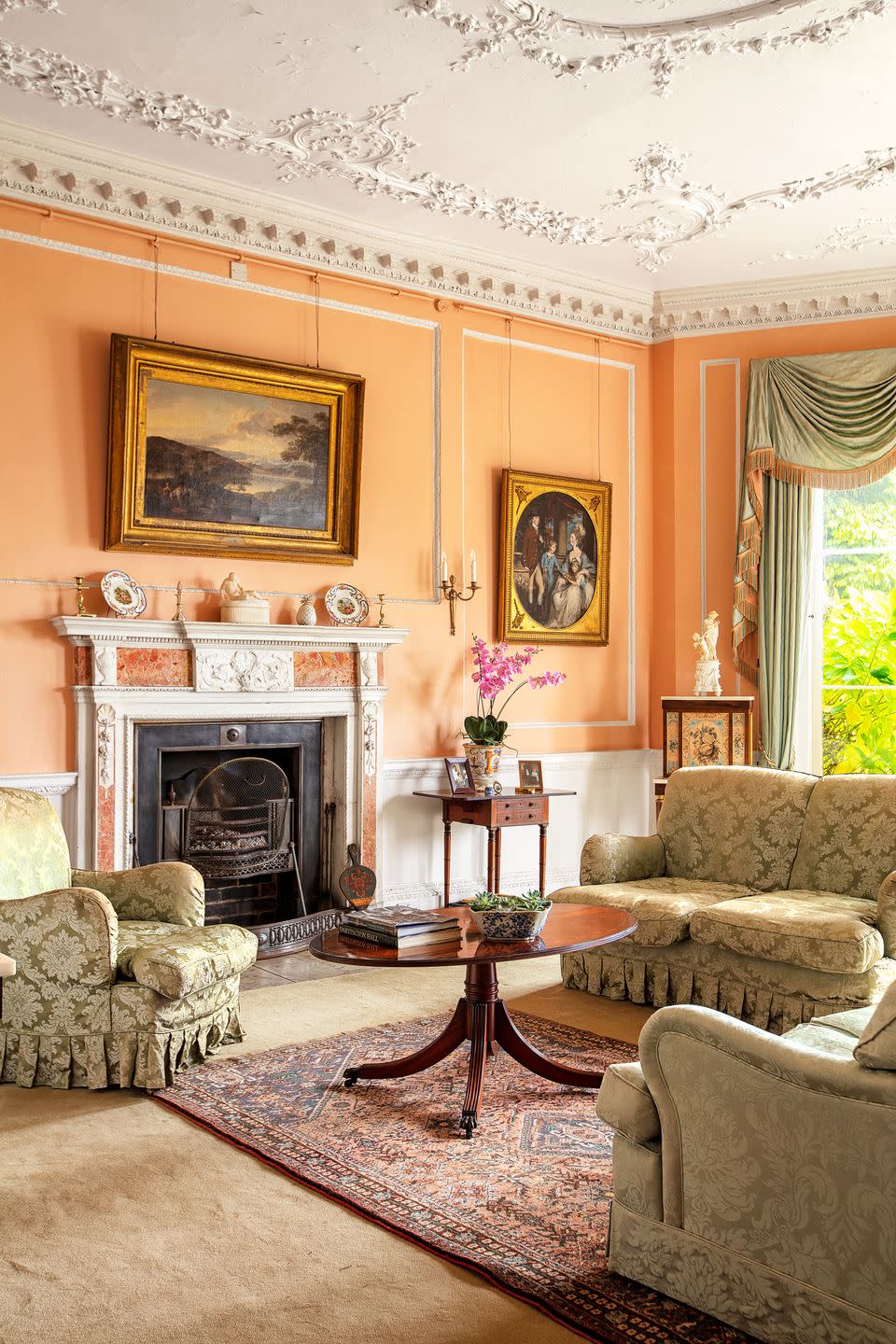
“Revenues are reinvested in the buildings, which we would like to pass on to the next generation in a good state,” Courtenay says, referring to his children, 13-year-old Joscelyn and 11-year-old Jack. Mom and Dad met in the United States while he was on tour with the London Scottish Rugby Club—wearing a kilt, no less. A native of California whose credits include My So-Called Life, A.J. Langer needed time to warm to her surroundings.
“It takes a few days to walk around the house, let alone the estate,” she says. Eventually, Powderham cast its spell, and she did what so many before her had done: “You fall in love with it.”
Clive Aslet is the author of Old Homes, New Life: the Resurgence of the British Country House, (Triglyph Books).
You Might Also Like


